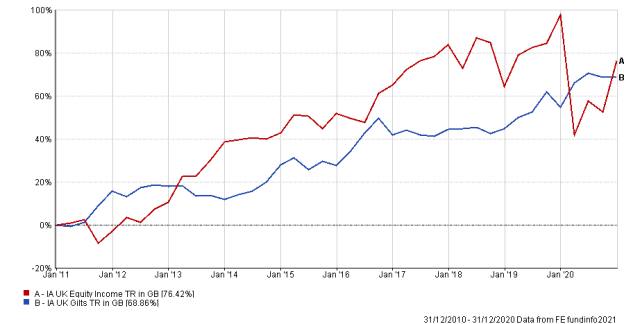
Building a sustainable income portfolio

He is referring to the challenge faced by asset allocators in trying to construct an income portfolio for clients in a period when government bond yields are at near record low levels, while traditional income-paying equities in areas such as retail banks, commercial property and oil companies are cancelling dividends.
Among the fastest growing companies listed on global equity markets, many are technology companies which do not presently pay significant dividends.
Balmer says low bond yields are forcing clients out of fixed income and into equities, “and because most of the equities that pay a decent yield are in riskier sectors, even a medium risk income portfolio is today higher risk than it has been in the past.”
He says his funds have started to buy emerging market bonds and high yield bonds as a way to grow the income yield, while not taking additional equity risk.
Quantitative easing
It is the precise aim of the central bank policy of quantitative easing to drive down the yields available on government bonds as a way to drive capital into higher risk areas of the market where the impact could be larger.
Aurele Storno, chief investment officer for multi-asset at Lombard Odier, says with valuations across all conventional asset classes “mid to highly expensive” the returns available to investors over the coming decade are likely to be lower than they have been in the past.
He believes it is realistic for clients in drawdown to expect a portfolio yield of between 3 per cent and 4 per cent in the years to come, whereas in the past the yield that could reasonably be expected was between 4 and 5 per cent.
Andrzej Pioch, multi-asset investor at Legal & General, says clients have to choose whether they want to “chase the yield”, in which case they will have to accept more volatility, or, if the client is in drawdown, he or she may wish to accept lower volatility and a lower yield for a quieter life.
One of the ways in which he tries to square the circle between volatility and yield is by owning lower volatility assets such as developed market government bonds, but going further afield than just the UK or US, so buying the sovereigns of Australia for extra yield.
Paul Niven, who runs the MAP multi-asset fund range at BMO GAM says: "In a low interest-rate world and one where the outlook for company earnings is uncertain, sourcing attractive and reliable sources of yield is a challenge. Keeping diversification to the fore of our thinking helps – a mindset that allows us to search out income opportunities and manage risks.
"A key focus for us is the sustainability of income, especially in the context of ensuring that we don’t erode our clients savings by chasing high but ultimately unsustainable yields or investing in companies that pay a high dividend but make a loss in terms of their share price performance."
Stephen Hay, multi-asset income fund manager at Baillie Gifford is another investor keen on high yield bonds; he says a climate of economic recovery at a time when government bond yields are still very low, “is just about ideal for high yield bonds.”

Sunil Krishnan, head of multi-asset at Aviva Investors believes the pain might be about to ease for multi-asset investors.
He says that with inflation becoming a factor in the economy for the first time in more than a decade, the chances are the yields on assets such as government bonds will rise, providing a fresh source of income for clients, though it may mean losses in capital terms for others.
Krishnan is wary of investing in high yield bonds as a source of income. He says: “The problem with those is, you get short periods of really excellent returns, followed by some decent returns, and then some terrible returns.
"The optimal time to buy those is just after the period of horrific returns, and that period is not now. I think in this climate, with the extra volatility in markets, the main thing is to have liquidity in terms of what you buy, and also price discovery (the ability to know what the sale price will be prior to the transaction completing), and that is not something you can be sure of with high yield bonds, so we have lately been selling those and buying more equities.”
Peter Vincent, head of investment solutions for EMEA at Franklin Templeton says investments in less liquid assets can be productive for longer-term clients with an income focus, as such investments tend to have traded cheaply to make up for the lack of liquidity. He says such assets do have short term bouts of volatility.
He says clients seeking income returns which are not correlated to wider equity markets should look to real estate and infrastructure funds, as those tend to have high yields.
Vincent is also keen on private equity funds as a source of income, but says those tend to perform much more like other equities, and so offer less diversification.
Property Perspectives
Phillip Matthews, who jointly runs the TB Wise Multi-Asset Income fund, is another investor keen on the outlook for property.
He says: “Property as an asset class bore the brunt of some of the worst Covid-induced volatility, as tenants refused to pay rent and the crisis highlighted pre-existing structural concerns.
"We believe these concerns have seen several well-managed trusts with decent underlying property assets fall to underserving discounts to net asset value.
"Whilst dividends have been cut to reflect reduced rental income, they are now well-covered by current rental income and pressure will grow for them to increase for the companies to comply with Real Estate Investment Trust tax rules that require 90 per cent of earnings to be paid out as dividends.
Ediston Property Investment Company, for example, yields 5.5 per cent which is covered 130 per cent by its earnings – we can see further scope for recovery back towards its pre-Covid yield of 8.6 per cent, once there is greater clarity over the return to relative normality.
"We see scope in many of our property holdings for dividends to be restored and then grow, for this to be reflected in an upward revaluation of the portfolios and discounts against these to narrow.”
Iain Barnes, head of portfolio management at discretionary fund house Netwealth, says he prefers to manage portfolios to achieve the highest returns possible, rather than target income and be forced to buy assets that are less attractive but offer a way to hit a specific target.
He nevertheless believes that many of the traditional income sectors will start to perform better in the short-term as the economic recovery takes hold.
David Thorpe is special projects editor of FTAdviser




.jpg)
